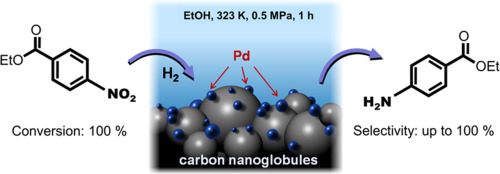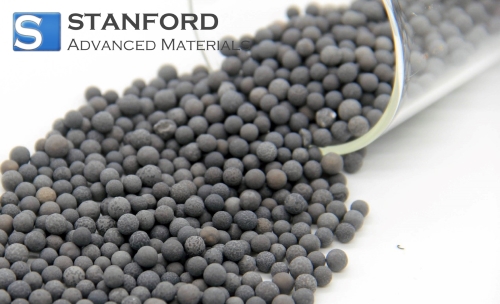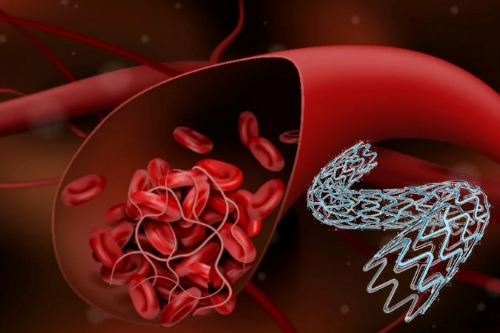Liste des matériaux de support pour les catalyseurs au palladium
Les catalyseurs au palladium sont essentiels dans de nombreuses réactions chimiques, en particulier l'hydrogénation, l'oxydation et la formation de liaisons carbone-carbone. L'efficacité des catalyseurs au palladium est fortement influencée par le choix du matériau de support. Le support fournit non seulement une grande surface pour la dispersion du palladium, mais il affecte également la stabilité, l'activité et la sélectivité du catalyseur.
Voici les principaux matériaux de support utilisés dans la catalyse au palladium, chacun offrant des avantages uniques pour différentes applications :
 [1]
[1]
Fig. 1 Catalyseurs au palladium à base de carbone
1. Supports à base de carbone
- Carbone activé (Pd/C): Le charbon actif, l'un des supports les plus courants, offre une surface élevée pour la dispersion du palladium. Le Pd/C est particulièrement efficace dans les réactions d'hydrogénation et la synthèse chimique fine. La grande porosité et la stabilité du carbone contribuent à la réutilisation du catalyseur.
- Nanotubes de carbone (Pd/CNT): Les nanotubes de carbone offrent une surface encore plus grande et une excellente conductivité par rapport au charbon actif. Ils sont souvent utilisés dans des applications avancées telles que les piles à combustible et les capteurs en raison de leur grande stabilité thermique et chimique.
2. Alumine (Al2O3)
- Palladium sur alumine (Pd/Al2O3) : L'alumine est un support largement utilisé en raison de sa grande stabilité thermique et de sa capacité à supporter des réactions à haute température. Le Pd/Al2O3 est couramment utilisé dans les processus de reformage catalytique et de déshydrogénation, où la résistance aux températures élevées est cruciale.
- Gamma-Alumina: cette forme d'alumine est connue pour sa surface élevée et ses propriétés acides réglables, qui peuvent être adaptées à des réactions spécifiques, telles que l'oxydation sélective ou l'hydrogénation.

3. Silice (SiO2)
- Palladium sur silice (Pd/SiO2): La silice offre une surface élevée et est souvent utilisée dans des réactions nécessitant un support neutre. Pd/SiO2 est particulièrement efficace dans des réactions telles que l'hydrogénation et la déshydrogénation de composés organiques. La stabilité et la faible acidité de la silice la rendent appropriée pour les processus où les interactions acides avec le support ne sont pas souhaitables.
4. Zéolithes
- Palladium sur zéolites (Pd/Zéolite): Les zéolithes, avec leur structure poreuse très ordonnée, offrent des propriétés catalytiques uniques en raison de leurs caractéristiques acido-basiques et de leur sélectivité de forme. Les catalyseurs Pd/zéolite sont souvent utilisés dans des réactions telles que l'hydrogénation sélective et l'hydrocraquage, où la taille et la forme des pores peuvent influencer l'activité catalytique.
- Zéolithes hiérarchiques: Ces zéolithes possèdent à la fois des micropores et des mésopores, offrant une meilleure accessibilité aux molécules plus grosses et une meilleure stabilité, en particulier dans des réactions telles que l'oxydation sélective.
5. Oxydes métalliques
- Palladium sur dioxyde de titane (Pd/TiO2): Le dioxyde de titane est un support stable et polyvalent. Le Pd/TiO2 est utilisé dans des réactions telles que l'hydrogénation et l'oxydation, où le support de titane joue un rôle dans le transfert d'électrons et la photocatalyse, en particulier sous la lumière UV.
- Palladium sur zircone (Pd/ZrO2): La zircone est utilisée pour sa grande stabilité à haute température. Le Pd/ZrO2 est efficace dans des réactions telles que l'hydrogénation et l'oxydation sélectives, où les propriétés catalytiques du palladium et la stabilité thermique de la zircone sont essentielles.
6. Magnésie (MgO)
- Palladium sur magnésie (Pd/MgO): L'oxyde de magnésium soutient le palladium dans les réactions où les propriétés basiques et thermiques sont importantes. Les catalyseurs Pd/MgO sont particulièrement utiles dans les processus d'hydrogénation et de reformage catalytiques.
7. Le graphène
- Palladium sur graphène (Pd/Graphène): Le graphène, avec sa grande surface, sa conductivité électrique et sa résistance mécanique, est de plus en plus utilisé comme support pour le palladium. Les catalyseurs Pd/graphène sont très efficaces dans les applications d'hydrogénation et de piles à combustible, car ils offrent des propriétés électroniques et une activité améliorées.
8. Supports polymères
- Palladium sur polymères (Pd/polymère): Les polymères tels que le polystyrène ou le polyéthylène peuvent être utilisés pour soutenir le palladium dans des réactions spécialisées, souvent en catalyse en phase liquide. Ces supports peuvent offrir une sélectivité et une stabilité uniques dans les processus catalytiques impliquant des solvants organiques.
9. Supports métalliques
- Palladium sur or (Pd/Au): Dans certains cas, l'or est utilisé comme support pour le palladium en raison de ses propriétés électroniques uniques. Les catalyseurs Pd/Au sont particulièrement efficaces dans certains types de réactions d'oxydation et d'hydrogénation, où la surface de l'or renforce l'activité du palladium.
- Palladium sur cuivre (Pd/Cu): Le cuivre soutient le palladium dans les réactions qui nécessitent un équilibre entre les propriétés d'oxydation et de réduction. Les catalyseurs Pd/Cu sont souvent utilisés dans des processus tels que l'hydrogénation et l'oxydation sélective.
Catalyseurs à base de palladium sur différents supports
|
Matériau de support |
Exemples de supports |
Propriétés principales |
Applications |
|
Supports à base de carbone |
Pd/C, Pd/CNT |
Surface élevée, stabilité, conductivité (CNT), porosité |
Hydrogénation, synthèse chimique fine, piles à combustible, capteurs |
|
Alumine (Al2O3) |
Pd/Al2O3, Gamma-Alumina |
Stabilité thermique élevée, propriétés acides réglables |
Reformage catalytique, déshydrogénation, oxydation sélective |
|
Silice (SiO2) |
Pd/SiO2 |
Support neutre, stabilité, faible acidité |
Hydrogénation, déshydrogénation de composés organiques |
|
Zéolithes |
Pd/Zéolite, zéolites hiérarchiques |
Structure poreuse ordonnée, caractéristiques acido-basiques, sélectivité de la forme |
Hydrogénation sélective, hydrocraquage, oxydation sélective |
|
Oxydes métalliques |
Pd/TiO2, Pd/ZrO2 |
Stabilité, transfert d'électrons (TiO2), stabilité à haute température (ZrO2) |
Hydrogénation, oxydation, photocatalyse |
|
Magnésie (MgO) |
Pd/MgO |
Propriétés de base, stabilité thermique |
Hydrogénation, processus de reformage |
|
Graphène |
Pd/Graphène |
Surface élevée, conductivité électrique, résistance mécanique |
Hydrogénation, piles à combustible |
|
Supports polymères |
Pd/Polymère |
Sélectivité, stabilité dans les solvants organiques |
Catalyse en phase liquide |
|
Supports métalliques |
Pd/Au, Pd/Cu |
Propriétés électroniques uniques (Au), propriétés redox équilibrées (Cu) |
Oxydation, hydrogénation, oxydation sélective |
Ce tableau présente les divers matériaux de support utilisés pour les catalyseurs à base de palladium, leurs propriétés distinctives et leurs domaines d'application respectifs. Pour plus d'informations, veuillez consulter le site Stanford Advanced Materials (SAM).
Conclusion
Le choix du matériau de support des catalyseurs au palladium joue un rôle essentiel dans la détermination de l'efficacité, de la stabilité et de la sélectivité du catalyseur dans diverses réactions. En optimisant l'interaction entre le palladium et son support, les chercheurs et les ingénieurs peuvent améliorer l'efficacité des réactions et élargir le champ d'application de la catalyse au palladium dans les processus chimiques modernes.
Référence :
[1] Roman M. Mironenko, Olga B. Belskaya, Tatiana I. Gulyaeva, Mikhail V. Trenikhin, Vladimir A. Likholobov, Palladium nanoparticles supported on carbon nanoglobules as efficient catalysts for obtaining benzocaine via selective hydrogenation of ethyl 4-nitrobenzoate, Catalysis Communications, Volume 114, 2018, Pages 46-50, ISSN 1566-7367, https://doi.org/10.1016/j.catcom.2018.06.002.




